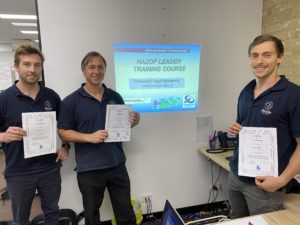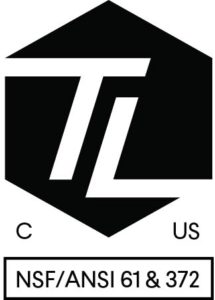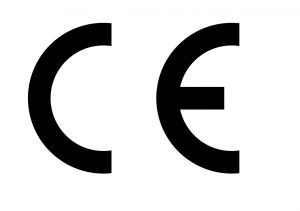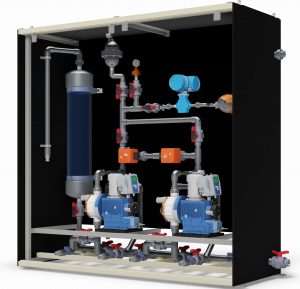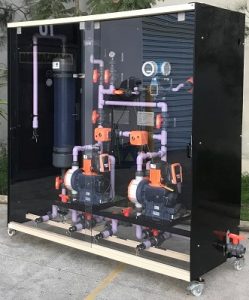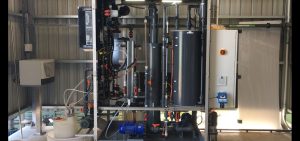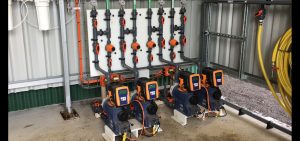One on-site generator solved multiple problems
Our New Zealand distributor – Visentia was approached by a dairy processor in New Zealand, to provide a disinfection solution for their process water (used for washing and as an ingredient in their infant formula product).
Two problems existed:
Chlorination of municipal potable supply to factory not reliable
Chlorine residual varied between 0.00 and 1.50 ppm. The customer required very good control of chlorine residual to ensure consistent disinfection performance.
Exisiting disinfection method created too much chlorate by-product
Extremely low chlorate is required in the water and product. Chlorate is a precursor for perchlorate and the presence of either compound is anathema. A previous supplier had sold them a 2-chemical chlorine dioxide generator to improve disinfection, but they had not considered the impact on chlorate formation. Chlorine dioxide reacts slowly with residual chlorine to form chlorite and chlorate. Chlorine dioxide reacts with organic and inorganic demand to form chlorite and chlorate. Some 2-chemical generators produce chlorate in the reactor and chlorate is present in the chlorite precursor. The result – too much chlorate.
Options they considered:
- Electricide® CDE electrochemical chlorine dioxide generator. The customer already had this generator on site for a different application. Trials were conducted using the 2,000 ppm ClO2 solution to disinfect the water. Result: lower chlorate than the 2-chemical generator, but not low enough to be acceptable.
- Liquified chlorine gas. They did not want to store chlorine in drums or cylinders on site.
- 12.5% sodium hypochlorite (bleach). High concentration of chlorate in freshly produced bleach and quick degradation in storage to form more chlorate. This option would only increase chlorate in the water.
- Calcium hypochlorite. Running cost is too high.
- Electricide® HG-10-G On-site chlorine generator using Electricide-B1 brine feed. This option ticks all the boxes. Chlorine gas is generated on-site and dosed into the process water main, prior to a large water storage tank. No storage of Dangerous Goods and low running cost. Zero addition of chlorate to the water.
Result
The HG-10-G chlorine generator was installed and has been operating for 12 months. Chlorate concentration in treated water after the generator is extremely low. Chlorine residual is maintained at 0.45 ppm when the free chlorine concentration in the muncipal supply is less than this value. When the muncipal supply concentration is greater than 0.45 ppm, the HG generator is idle. Overall, an excellent outcome.
The Electricide® HG chlorine generator is an electrolytic system for converting sodium chloride (salt) into chlorine. Electricide-B1 is a purified brine precursor that is fed into the HG generator at the anode side of the electrolytic cell, where chloride ion is oxidised to chlorine. Chlorine gas is extracted under vacuum and dissolved into water using a booster pump and eductor. Chlorine gas reacts with the water to form HCl and HOCl. The generator is configured to accept either salt (NaCl) in 20 kg bags or Electricide-B1 solution. The generator is skid mount and easy to install on site.
Chlorine Generation Reactions:
① Anode (oxidation): 2Cl– → Cl2 + 2e–
② Cathode (reduction): 2H2O + 2e– → H2 + 2OH–
Chlorine gas is extracted from the anodoe solution (anolyte). NaOH at the cathode (catholyte) is either wasted or re-used for pH correction.
What is good about it?
- Safety. Only one precursor chemical is required – Salt (NaCl) brine solution and this is non-hazardous. Chlorine gas is produced directly at the generator, on demand and is not stored. It is creation of chlorine gas from a non-hazardous precursor.
- Stability. There is nothing to degrade. Brine precursor is stable in storage and chlorine gas is generated fresh on demand.
- Purity. The chlorine gas produced by the HG generator adds zero chlorate, sodium and chloride to the water. This can be important for food production where low chlorate and perchlorate in the food product are important.
- Simplicity. The generator is simple to operate, install and maintain.
- Remote access. Web server access using any browser is standard with email alarms.
- Reliability. High quality components and controlled precursor purity equals excellent reliability.
Interested?
The Electricide® HG generators are available for purchase or rental, direct or through our distributors.
Generators are configured to use vacuum purified granular salt or Electricide-B1 solution.
In most cases, you can install and commission the generator with remote assistance (web or phone). Dioxide Pacific can install and commission the system if desired. Installation is a simple process for mechanical and electrical technicians.
Download the Brochure 
Download the case study 
Contact us for more information or a quotation.

 Fabrication
Fabrication 
